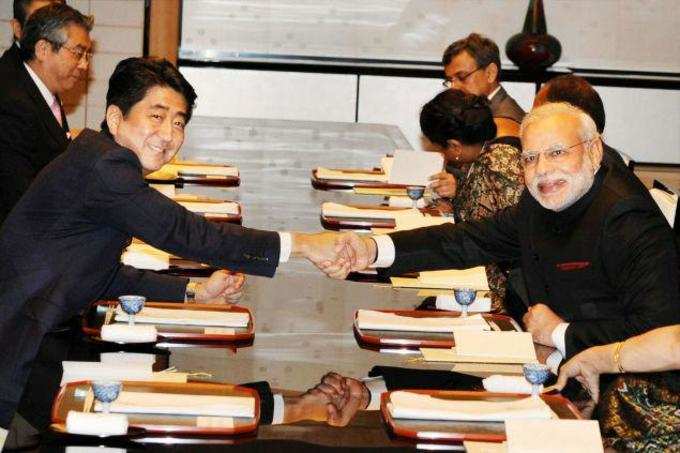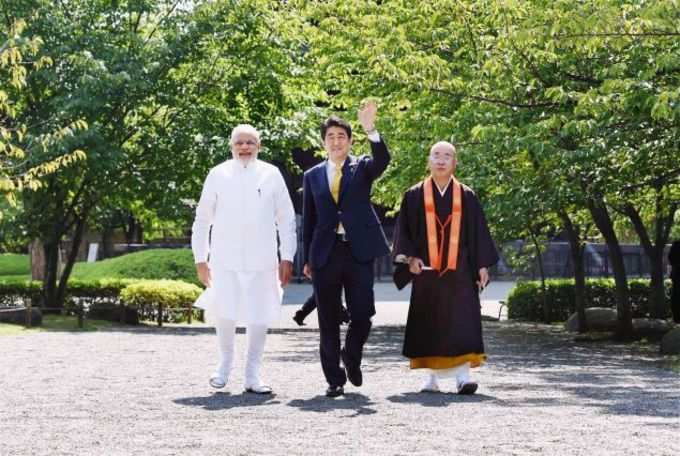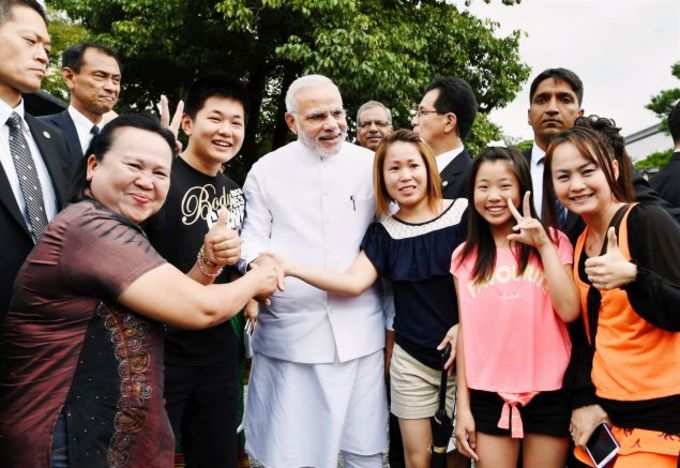 NEW DELHI: PM
NEW DELHI: PM Japan, which depends on China for most of its supply of rare earth metals, has been looking to diversify its supply sources. It sought cooperation from India over rare earths in 2012 after a fracas with China over Senkaku/Diaoyu islands which saw Beijing temporarily halting rare earth exports to Japan.
The two countries are expected to announce a joint partnership for infrastructure development in India with a major contribution from Japan. They are also likely to upgrade their 2+2 dialogue over overlapping security and defence issues to the ministerial level. India will also look to announce some progress in its negotiations with Japan for nuclear cooperation.
Modi arrived in

Dressed in an all-white kurta pyjama, sleeveless jacket and white sandals, Modi offered prayers at the two prominent Buddhist temples in Kyoto — Toji and Kinkakuji. Official sources said Modi wearing white was a statement about peace and tranquility associated with Buddhism, an Indian “connect'' to Japan.
He first went to Toji temple, which is inspired, as Modi told Abe, by the trinity of Hindu gods Brahma, Vishnu and Mahesh. Modi was at the temple complex for about half-an-hour during which he enquired about the history of the eighth-century Buddhist pagoda.
While leaving the complex, Modi thanked Abe for accompanying him to the temple and spending time with him. Abe, on his part, told Modi that this was only the second time that he had visited Toji temple, the last being during his student days.
In Kinkakuji, Modi mingled with tourists and visitors, shook hands, pulled the ears of a child and posed for photographs with groups of people.

Prime Minister Narendra Modi poses for a photo with tourists during his visit at Golden Pavilion Buddhist temple in Kyoto, Japan, on August 31, 2014. (PTI photo)
Abe lauds deep India-Japan historical ties
Lauding Japan's deep historical ties with India, Abe said he was looking forward to the summit meeting with Modi after they spent time together visiting Buddhist temples. “Looking forward to seeing PM Modi again in Tokyo tomorrow,” the Japanese PM tweeted.
In a series of tweets on Sunday, Abe spoke about his nation's “deep historical ties” with India. “I am very glad that PM Modi enjoyed the cultural heritage of Japan's ancient capital, Kyoto,” Abe tweeted.
— (@AbeShinzo) August 31, 2014
“With PM Modi, I visited Toji temple this morning. Looking at statutes of Buddha, we were reminded of the deep historical ties between Japan and India,” Abe said, adding that his dinner meeting with Modi was “very enjoyable”.
— (@AbeShinzo) August 30, 2014 Modi also sought Japan's help to fight the deadly sickle cell anemia commonly found among tribals in India during his visit to Stem Cell Research Facility at Lotus amuses Modi, tells Abe it is
When Prime Minister Narendra Modi visited the Toji temple on Sunday morning, a lotus attached to a statue of Lord Buddha stood out, much to his amusement.
Japanese PM Shinzo Abe, who was accompanying Modi during the tour of the ancient temple, wanted to explain the significance of the lotus.
He started detailing the significance and was midway when an amused Modi pointed out that he knows about it. “I know its significance. It is the symbol of my party (BJP),” he told Abe and both had a laugh.
Modi did not elaborate but during the campaign for
